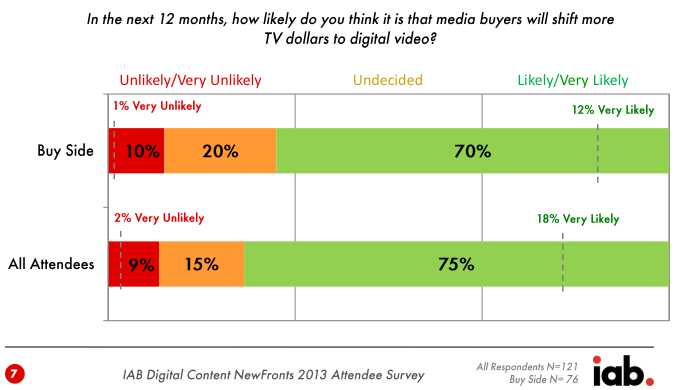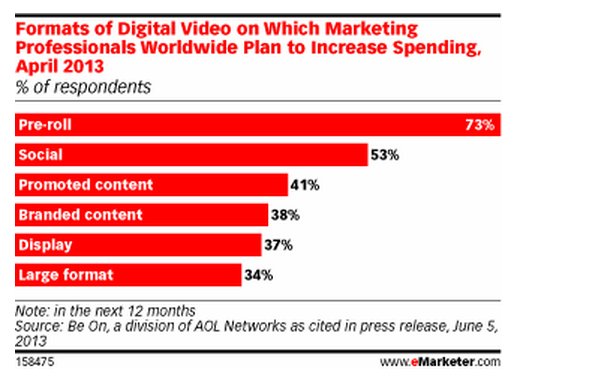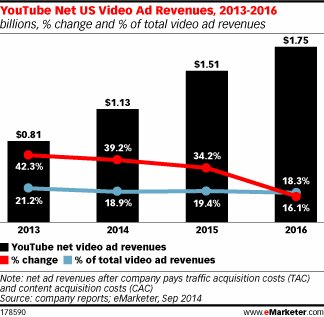Top advertising executives are gathering this week in New York at a conference of self-affirmation called Advertising Week. There, they will listen to Funkmaster Flex reassure them of the stability of the television advertising industry, while sometimes entertaining the idea that viewers are shifting more of their attention online.
The New York Times has a nice preview of the week to come, and I’ll share a couple of excerpts here:
“When it comes to demand for television commercial time, there may be ‘a bit of moderation off the long-term trends,’ Irwin Gotlieb, chairman of GroupM, the media division of WPP, said this month at the annual TVB Forward conference. “It continues to grow, albeit not at the levels it used to grow at in the ’80s and ’90s… The death of television has been forecast for far too long,” he added. “It ain’t happening; trust me.’”
“We remain confident that fears” that a shift in ad spending to digital from traditional will accelerate “will turn out to be overdone,” [Brian Wieser, senior research analyst at the Pivotal Research Group] said.
Now, let’s keep firmly in mind that last year the Interactive Advertising Bureau, which, as you might expect, often disagrees with major ad executives found in a poll that 70% of buy-side executives expected to shift money away from traditional TV ads in favor of online video.
Pre-roll ads and social video ads were special favorites.
I’ll be the first to admit that terrestrial, cable and satellite television won’t die off anytime soon. However, it’s important to also recognise the shift in how people consume content.
- Netflix has become hugely popular, not just for the network TV shows and studio movies that it streams, but also for it’s original programming. Amazon is now trying to replicate that success, too.
- In August 2014, 196 million Americans watched online videos, according to Commscore, and two of the largest online video streaming companies, AOL and Yahoo! are in merger talks.
- YouTube’s revenue is projected to rise to $1.75 billion by 2016, after taking in more than $1 billion this year, according to eMarketer.
YouTube’s revenue may be small compared to what some of the major TV networks take in, but the continued rise, during a time that other forms of advertising are stagnating or are in decline is what’s important. Another stat from the IAB backs this up. In Q1 2014, online ad revenue hit an all-time high of $11.6 billion. That’s not for the entire year. That’s for Q1.
According to the Wall Street Journal (also writing about Advertising Week 2014):
“ZenithOptimedia predicts that Internet advertising will command about 24% of the $523 billion that is expected to be spent on ads around the globe in 2014. This year, for the first time, Internet advertising will exceed the combined share spent on newspapers and magazines, Zenith predicts.”
And also keep in mind that, whatever industry nay-sayers may say publicly, programmatic buying is not just a short-term trend. Nor is digital video advertising.
While the big agency leaders like Martin Sorrell and Maurice Levy may be racking up the quotes before Advertising Week actually kicks off, I predict that we’ll hear much more from some of the other attendees and presenters, who include Cheryl Sandberg (Facebook), Tim Armstrong (AOL), Arianna Huffington (Huffington Post), Marissa Mayer (Yahoo!), and even Parez Hilton (of the eponymous blog).
It’s time for all advertisers, be they big or small, to start taking advantage of digital video advertising. Technology is eroding the barriers to entry for even small, local businesses and a glut of online content is keeping inventory prices low.
Get started before we get to Advertising Week 2015, and everything I just wrote is assumed to be common knowledge.
David Lee is Founder and CEO at Shakr, where small and local businesses can make great video ads in minutes, without editing skills or fancy software. Make a free video at Shakr, today.





